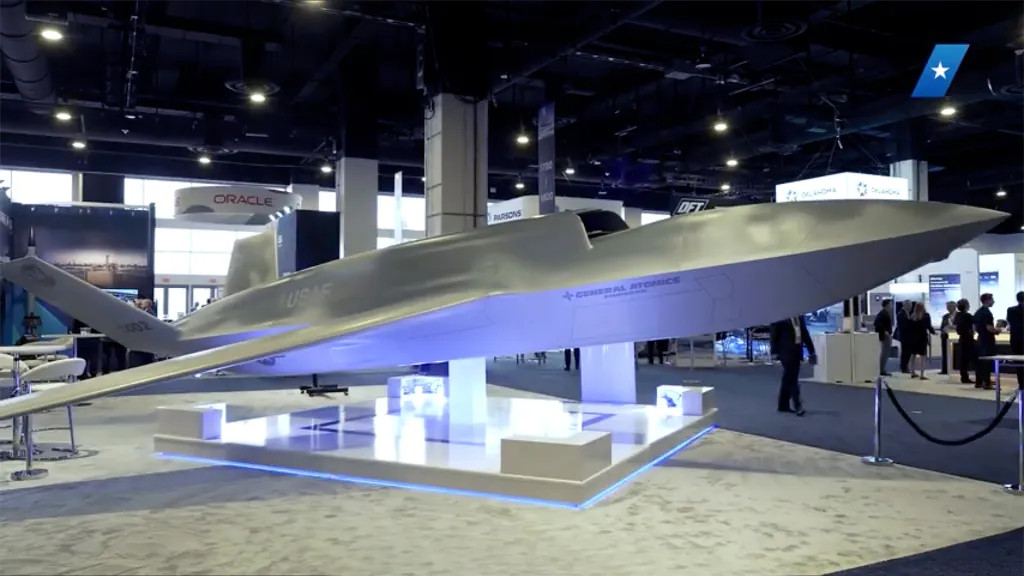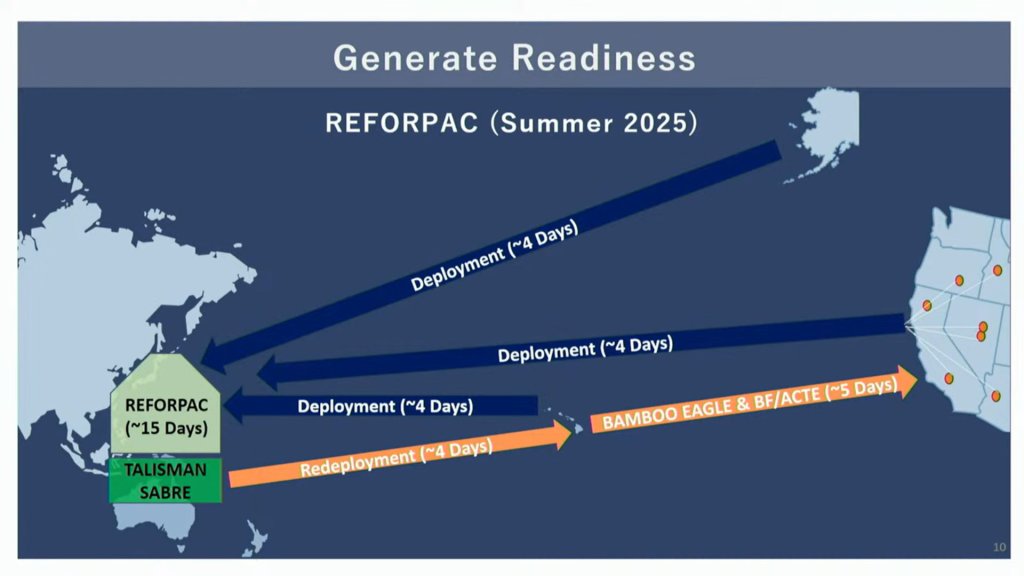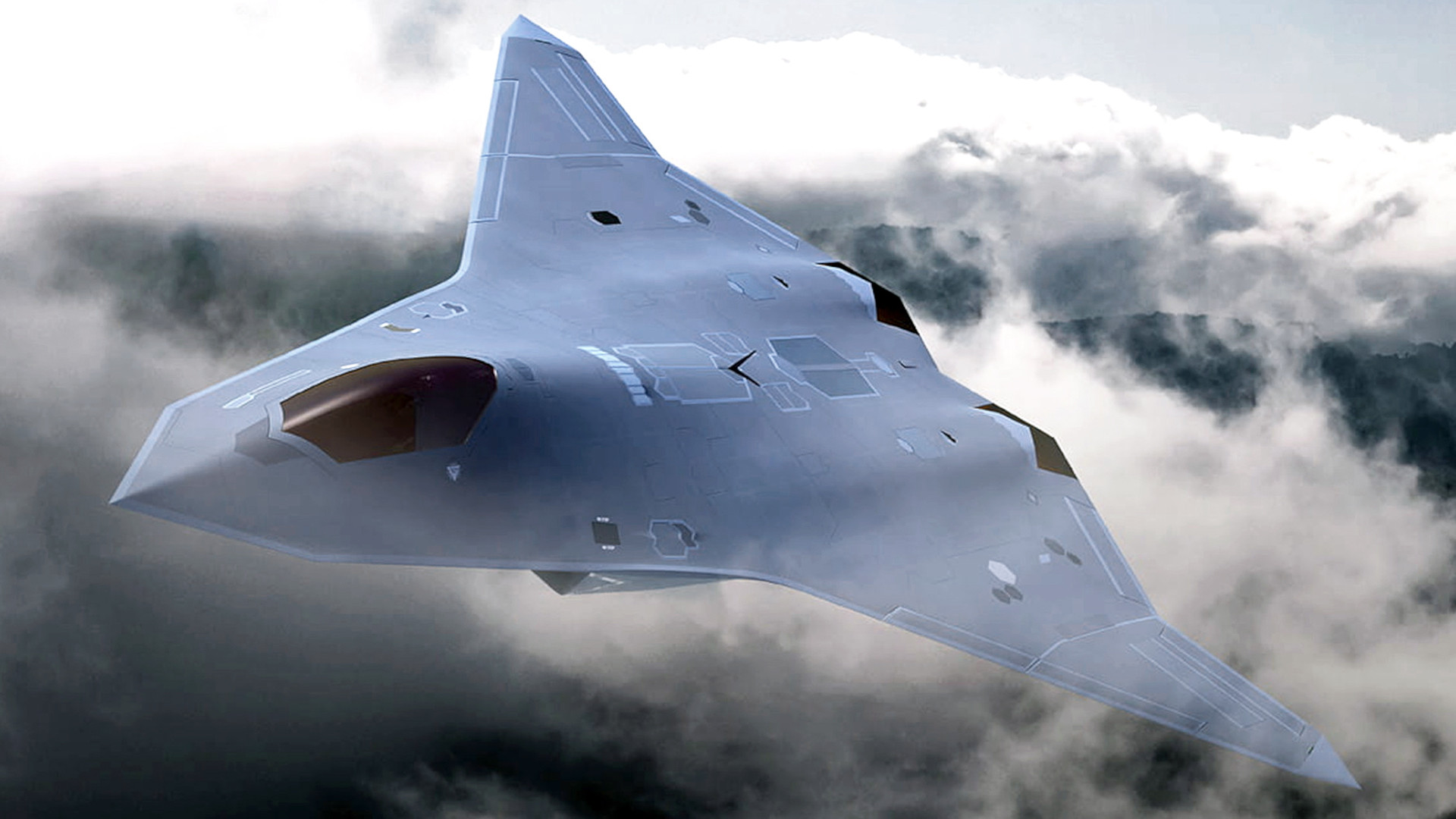The future outlook for the U.S. Air Force’s top modernization efforts is even more uncertain after the service’s civilian boss openly questioned the affordability of buying any combination of new stealth fighters, advanced aerial refueling tankers, and highly autonomous drones. A deep review of plans to acquire a new sixth-generation crewed stealth combat jet is already underway, the results of which are set to have much broader ramifications.
Secretary of the Air Force Frank Kendall made deeply concerning pronouncements about the state of the Next Generation Air Dominance (NGAD) initiative, as well as the Next Generation Air Refueling System (NGAS) effort, at the Airlift/Tanker Association’s (ATA) annual symposium last Friday. The Air Force’s sixth-generation combat jet program, also referred to as the NGAD or Penetrating Counter-Air (PCA) ‘platform,’ and its Collaborative Combat Aircraft (CCA) drone program, sit under the larger NGAD umbrella.

“You may also have heard that the Department of the Air Force is reconsidering the Next Generation Air Dominance platform, the NGAD platform, our sixth-generation fighter. This isn’t entirely accurate, or at least it is incomplete,” Kendall said during a keynote address at the ATA gathering. “We are actually looking hard at the combination of the Next Generation Air Dominance platform, the Increment Two uncrewed Collaborative Combat Aircraft, and the Next Generation Aerial Refueling System, all in an Agile Combat Employment context.”
The Air Force is currently running the CCA effort in incremental development cycles. General Atomics and Anduril are currently developing designs as part of Increment 1. Requirements for Increment 2, which could be dramatically different, are still being finalized. The stated plan previously was to launch the Increment 2 CCA competition sometime in Fiscal Year 2025, which began on October 1.


When it comes to NGAS, the Air Force has consistently described it as a ‘system of systems,’ a core component of which has long been expected to be a new stealthy crewed tanker.
Agile Combat Employment (ACE) collectively refers to a set of concepts of operations the Air Force has been developing in recent years that focus heavily on being able to deploy and redeploy forces quickly and in irregular ways, including to far-flung operating locations. The central objective behind ACE is to make it difficult for opponents to predict the movement of friendly forces and target them, while also reducing reliance on large established bases that are expected to be top targets during any future high-end fight.
“These three potential new designs and platforms are all tied together, both operationally and from an affordability perspective. We are working through a sprint of about four months of effort to determine the best combination of capabilities to pursue at various investment levels,” Kendall continued in his keynote. “The variable that concerns me most as we go through this analysis and produce a range of alternatives is going to be [the availability of adequate resources.] … to pursue any combination of those new designs.”
“Right now, given our commitments, our resources, and strategic priorities, it’s hard for me to see how we can afford any combination of those new designs,” Kendall added bluntly.
Cost is already well known to be the central driver behind the review of the NGAD combat jet, which the Air Force hopes will wrap up before the end of the year. Initial estimates had put the unique cost of the aircraft in the region of $300 million or more. Kendall has repeatedly expressed a desire to cut that by a whopping two thirds, closer to that of a current generation F-35 stealth fighter, possibly by refocusing the design around a much more limited set of roles and missions, especially acting as a forward controller for CCA drones. You can read more about what that could look like in this past War Zone feature.
It’s also worth remembering that Chief of Staff of the Air Force Gen. David Allvin, the service’s top officer, showed an artificial intelligence-generated rendering of a notional light stealth fighter, seen below, ostensibly a thought exercise, during a presentation at the Global Air and Space Chiefs Conference earlier this year. At the more recent 2024 Military Reporters & Editors (MRE) Conference last month, Allvin said that the B-21 Raider stealth bomber taking on a greater ‘air dominance’ role depending on the outcome of the NGAD combat jet review had not been “taken … off the table,” as well.

The Air Force also previously disclosed the intersection of the NGAD combat jet, Increment 2 CCA, and NGAS plans, which was not surprising to begin with.
The NGAD ‘fighter’ has long been presented as an important future ‘quarterback’ for CCAs, but there has also been some uncertainty around exactly how those drones will be utilized, in general. The Air Force recently pushed back on assertions from Lockheed Martin that the Increment 1 CCAs would likely be more experimental than operational in nature. Lockheed Martin was notably not chosen to proceed in the initial phase of the CCA program, having, by its own admission, proposed an advanced, but also extremely costly design.
At the same time, in the past year or so, the Air Force has notably walked back its language about its plans for the CCA fleets, especially their size. When the program was first announced, the Air Force’s stated goal was to buy as many as 1,000 of those drones, if not many more. It has since been clarified that this figure reflects the expected CCA fleet size across all increments. In April, Secretary Kendall said that he expected there to be just around “100 [aircraft] on order or delivered” under Increment 1 by the end of the decade, at which point the hope is that they will have entered operational service. Chief of Staff Allvin has also since put forward a 150 airframe figure for Increment 1. How many more drones from subsequent increments may also be on hand or on the way by 2030 is unknown.
In addition, the final design of the NGAD combat jet, as well as that of future CCAs, will have clear and direct implications for what it will take refueling-wise to support their operations. When it comes to future tankers, The War Zone has already been highlighting for years the increasingly critical need for more survivable refueling platforms, especially to support stealthy aircraft operating in highly contested environments.

“Essentially the threat, China again, has reached out with new counter-air systems that could threaten our aircraft, especially tankers, at longer ranges, beyond the ranges which we normally would refuel fighter planes,” Kendall said at the ATA symposium. “This put our whole tanker acquisition strategy in question. It is still in question, but we are working to resolve the uncertainty as quickly as possible.”
Operational range considerations have long been shaping up to be especially central factors in air combat planning around a potential future large-scale conflict in the Pacific against China, including for CCA drones, some of which may or may not ultimately have aerial refueling capability.
“You have to understand the geography, the nature of the environment within which you would use” CCAs, Chief of Staff Allvin said at the MRE conference in October, highlighting the particular “tyranny of distance” involved in any operations in the Pacific. Earlier this year, the Air Force’s top officer detailed plans for a new large-force exercise next summer focused heavily on just testing the service’s ability to get forces where they need to be in the region relatively rapidly.

“We must have a more resilient tanking capability. There are a number of ways to accomplish this,” Kendall added in his keynote last week. “A new design, purpose-built tanker – NGAS – is one of them. Unfortunately, any new design cannot be fielded for several years at best, even if affordable.”
Any new stealthy tanker design might also be pilot-optional or even entirely uncrewed. Crewed and uncrewed tankers of various kinds could also deliver fuel to receivers via a hub-and-spoke concept, with more survivable aerial refuelers ferrying gas to areas closer to the tactical edge.
The Air Force is also exploring new ‘buddy store’ podded aerial refueling systems compatible with aircraft that use the boom method, which is the service’s preferred way for getting gas into aircraft in flight. This might allow for even existing fighter-sized aircraft to help support refueling operations.
“Other options include various ways of increasing the resilience of the current force,” Kendall continued. “The need for improved connectivity and some degree of enhanced self-protection measure[s] appears to be attractive from both an affordability and cost-effectiveness perspective. It is also something that can be accomplished in relatively short time frames at relatively low cost.”
The Air Force, as well as the U.S. Navy, has been eying new defensive and situational awareness upgrades for tankers and other larger support aircraft for years now. Fielding dedicated loyal wingman-like drones to help protect those platforms is also being actively explored.
A variety of other modernization efforts for the non-stealthy KC-135 and KC-46 tankers in the Air Force’s inventory are also on the table, including a potential pathway to turning them into optionally crewed aircraft. Those aircraft could also see their roles and missions expanding, including through the addition of the ability to act as motherships for swarms of drones.

There is also the matter of next-generation airlift capabilities, which Kendall stressed the importance of in his ATA keynote address. However, plans for a future Next Generation Airlift (NGAL) system of systems are even further away on the horizon than NGAS and face the same affordability challenges.
The Air Force has been warning about the impacts of at best largely flat defense budgets in the coming years, too. The service has other priorities it needs to pay for, as well. Most prominent among those demands at present is the new LGM-35A Sentinel intercontinental ballistic missile and its associated infrastructure work, the costs of which have skyrocketed.
Air Force officials have repeatedly said that they remain committed to the NGAD initiative broadly, as well as to finding ways to dominate the air superiority space going forward no matter what the specific combination of future platforms might look like in the end. That being said, concerns have been steadily growing about the shrinking size of the service’s tactical jet fleets now.
Kendall himself has said that the Air Force’s current budgetary situation has been more and more apparent for some time now, raising additional questions about why the service is only wrapping up the review of its modernization plans now.
Overall, the prospect that one or more top-tier modernization programs, such as the NGAD combat jet, might end up seriously truncated or even canceled seems to be steadily growing. The current NGAD platform discussions, specifically, in many ways evoke the memory of what happened to plans for the F-22 Raptor in the late 2000s. At least one retired Air Force official has since said that the service sacrificed its dream of a larger Raptor fleet in order to save what evolved into the B-21.
Whatever happens to the NGAD combat jet program in the coming months, it is clear that the impacts will be much wider spread across the Air Force’s modernization priorities. Serious questions have now emerged about what it will take for the service to be able to afford any next-generation aircraft fleets, including future tranches of CCA drones and stealth tankers.
Contact the author: joe@twz.com
